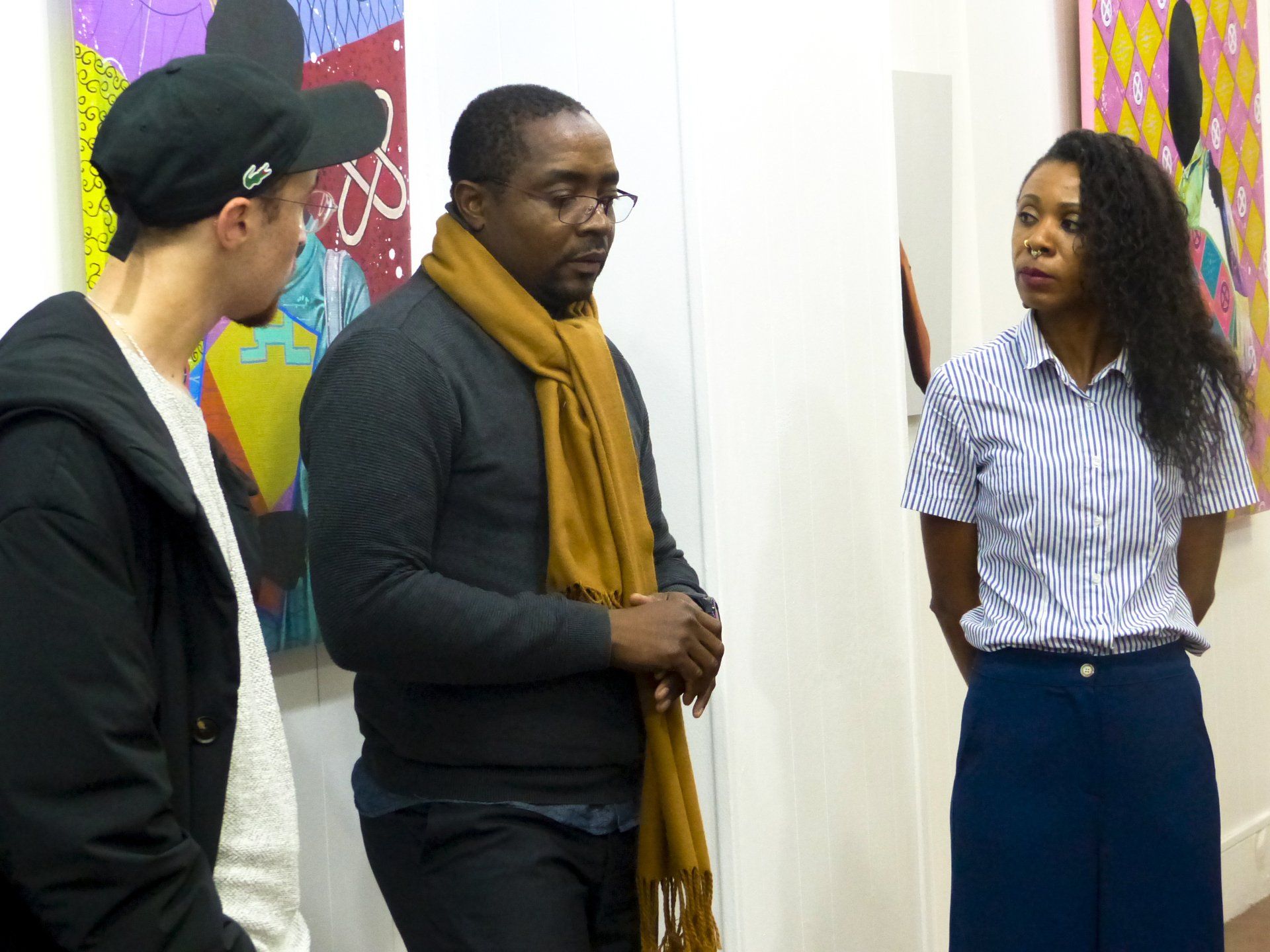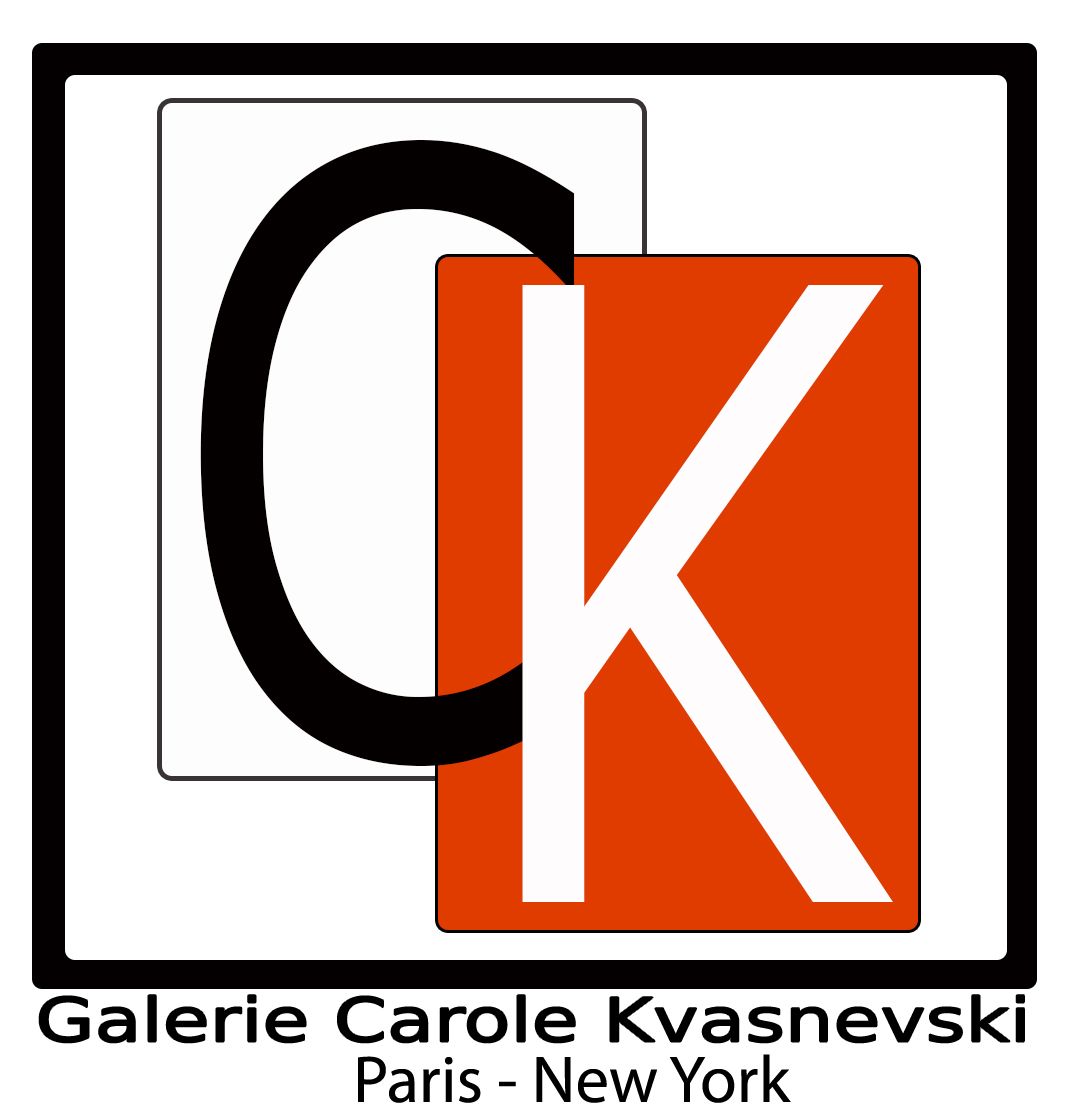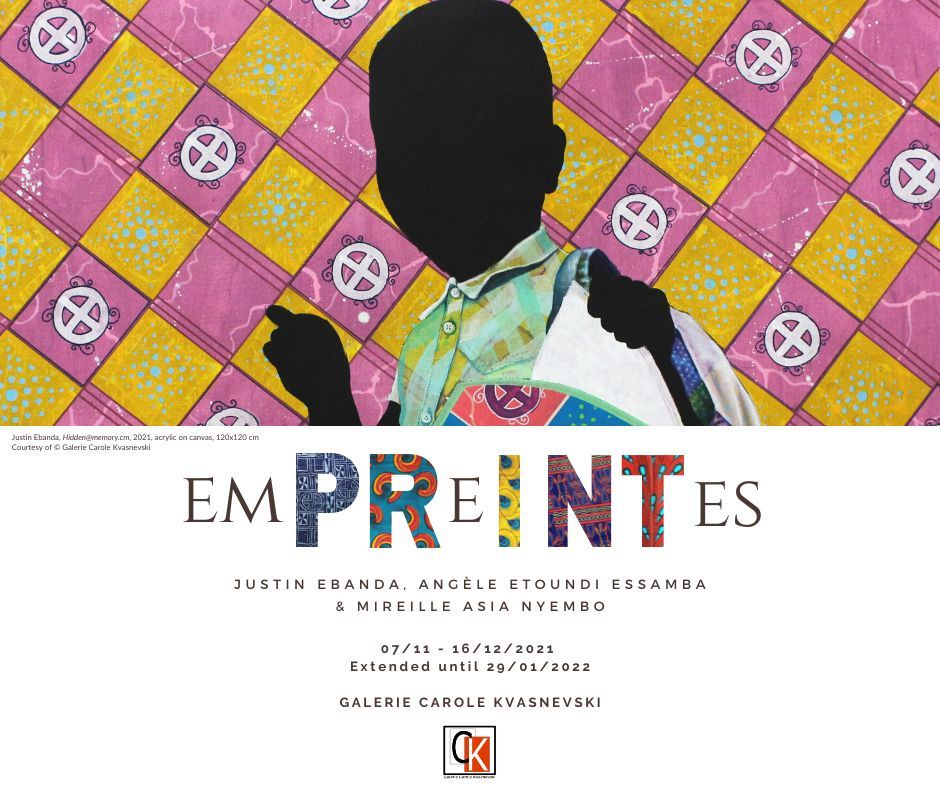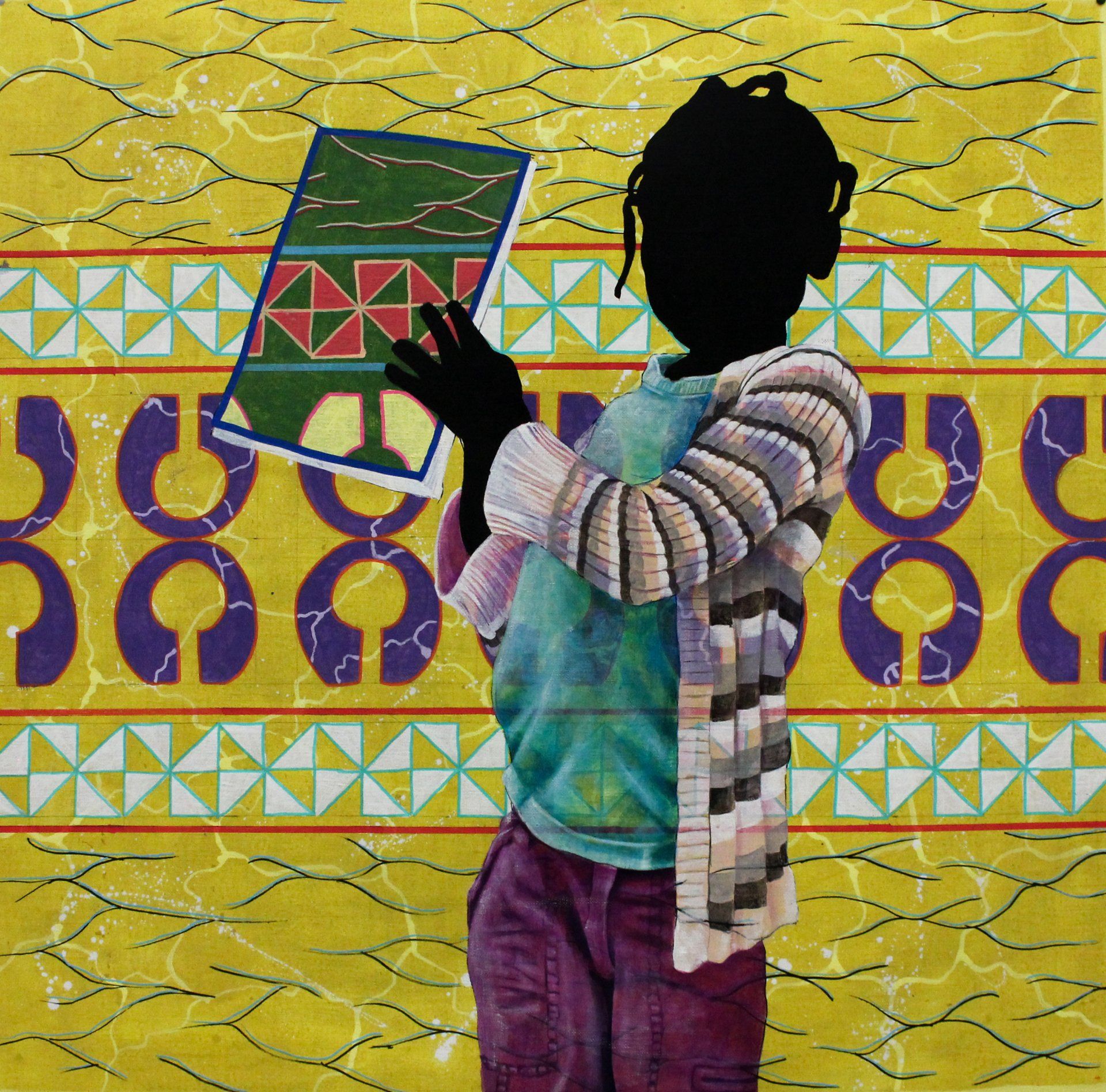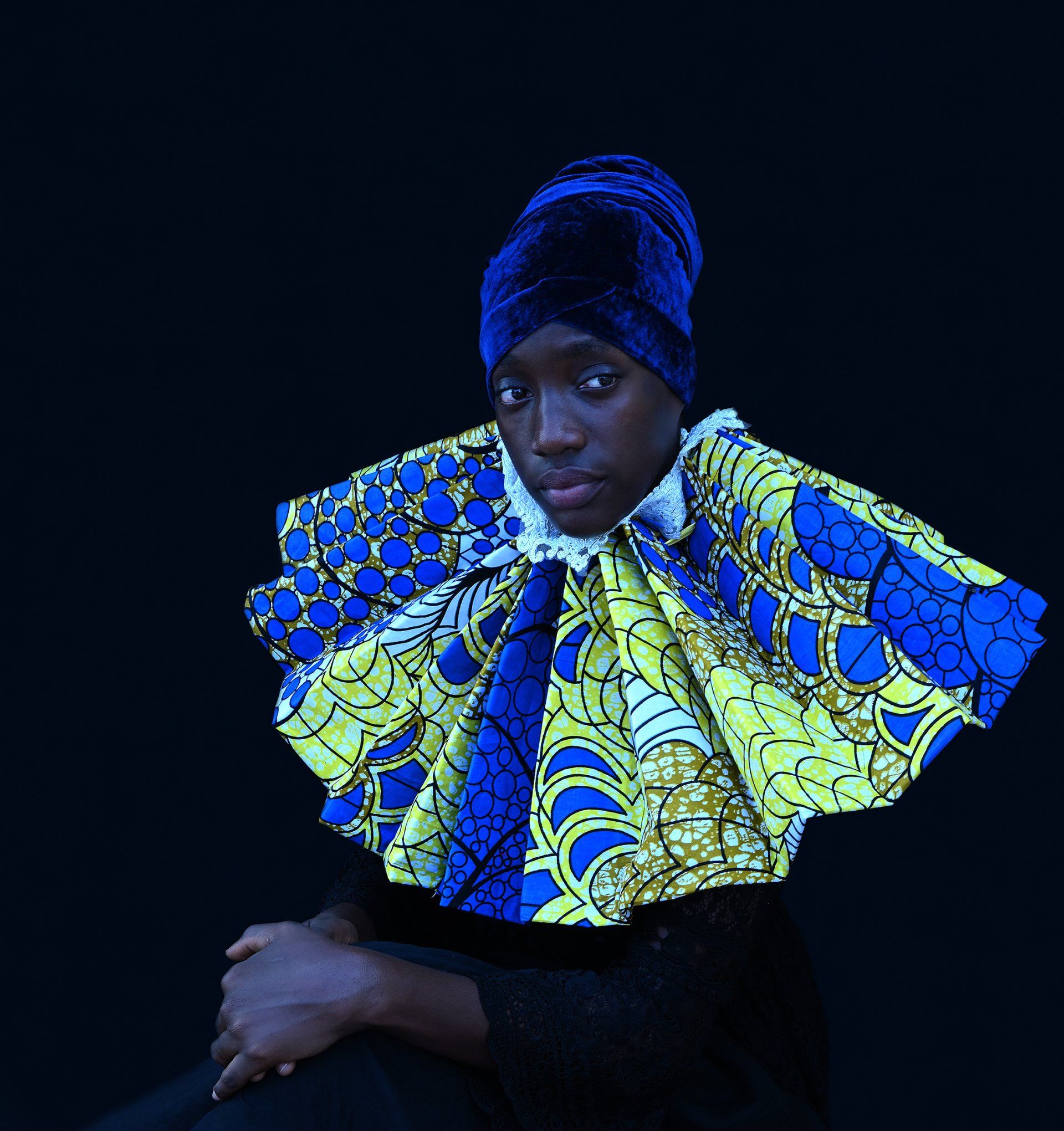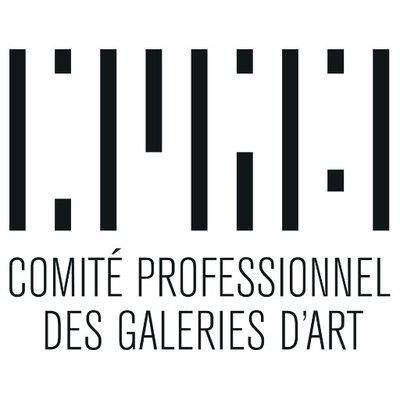JUSTIN EBANDA
ANGELE ETOUNDI ESSAMBA
MIREILLE ASIA NYEMBO
emPReINTe [s]
Exhibition curators:
Pascale Obolo & Carole Onambélé Kvasnevski
GALERIE CAROLE KVASNEVSKI
7 November - 16 December 2021 Extended until 29 January 2022
Official programme
"un dimanche à la galerie"
emPReINTe(s) is a group show assessing the history and identity of African printed textiles and their influences on our contemporary African societies.
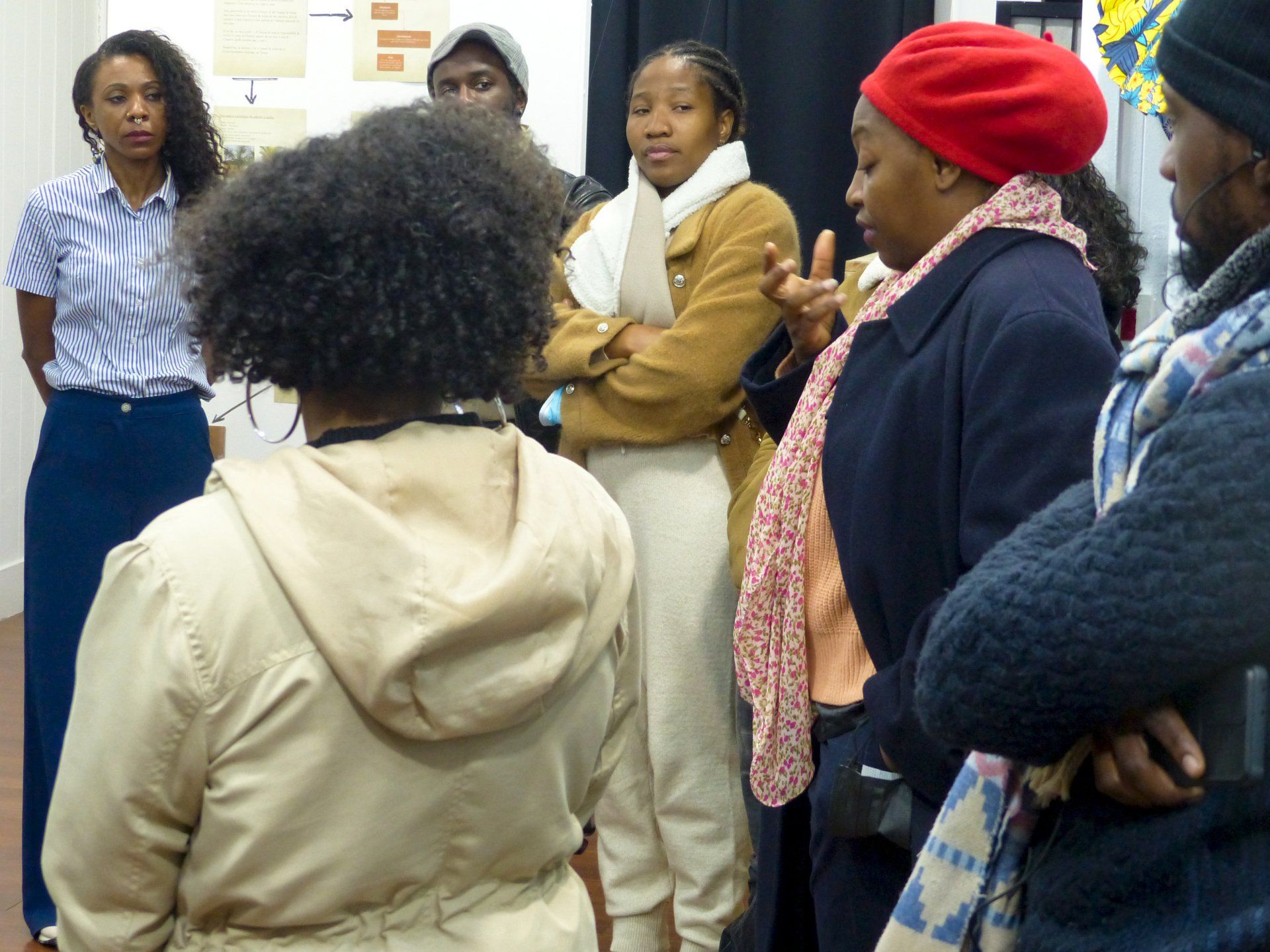
Pascale Obolo - Curator
The emPReINT(s) exhibition focuses on the difference between the colonial wax fabric created by the Dutch and the awareness of the invisibilisation of African-made fabrics. It questions the "corrective approach", aiming to redefine and restore the fabrics made in our African societies. This exhibition also aims to broaden the history of African fabric design through a selection of presented works.
The link between the current market dominance of wax and the colonial legacy is obvious. To be interested in real traditional fabrics is also entails to question the Western domination of Africa.
In our societies, African prints are of major importance. They are used as a means of communication - sometimes even political. They are also used to differentiate social classes in African societies...
One cannot talk about the history of African fabrics without mentioning colonisation. Wax is a fabric of Dutch origin, not African, and is also known as "African fabric" and "loincloth". Its name "wax" and comes from a wax-based printing technique derived from the batik of Java in Indonesia, another former Dutch colony. Imported in the 19th century by the Dutch, this technique consists of covering the negative motif with wax, dyeing the fabric with a colour and rinsing it to remove the wax.
The Dutch took up this technique with the aim of conquering the sub-Saharan African market. This fabric, which is highly appreciated and adopted by the West African community, was a real success. As a result of this enthusiasm for wax in West Africa, the Dutch decided to mass-produce this fabric and market it in abundance. The problem is that today, wax has overshadowed other traditional African fabrics. It is therefore a product that was exported and re-imported into Africa.
The exhibition pays tribute to African fabrics and its history by linking it to multiple narratives and artistic practices evoked in the works of the artists shown in emPReINTe(s).
The works of the visual artists are thematically linked to three different themes, each offering a new perspective on the question of representation related to decolonisation and the de-construction of imaginaries. The artists transform this African aesthetic fabric into a political fabric by proposing new narratives to question this colonial history that has been erased and written in a certain way.
The exhibition also shows how the history of wax has been shaped in the imagination of Africans.
The three artists, whose working methods are very different and whose approaches are sometimes diametrically opposed, are united in what they hold dear: the place and role of memory in African cultures.
Born from the meeting of three universes, those of Justin Ebanda, Angèle Etoundi Essamba and Mireille Asia Nyembo, the emPReINTes exhibition is the crossed conversation of three visual artists. This multi-faceted vision is expressed in photos, paintings, videos and installations.
Beyond a simple game of perspective, Justin Ebanda's works recall the meticulousness of flamboyant painting filled with vivacity and colours that question collective amnesia. He paints the face of a future Africa that is the master of a very modernist societal vision with great precision. His art depicts "the memory of Men who have marked their time and whose marks continue to survive among us and with us today". Justin Ebanda's paintings say as much about the suspended and chaotic daily life as they do about our states of mind, our imaginations and our inner storms.
Timeless, the works of photographer Angèle Etoundi Essamba use temporality as their raw material. A temporality made of stretching and of fabric materials intertwined with historical and pictorial references of Flemish painting mixed with her African culture.
In her photos she stages portraits of African characters dressed in wax collars accompanied by a video.
In addition to her interest in the history of clothing in our societies, Angèle reflects on the way in which these are linked to the colonial history that still haunts us today.
The first theme explores the notion of portraiture and representation through the photographic work of artist Angèle Etoundi Essamba today, with historical and biographical information. The resulting works address the issue of cultural appropriation.
The second theme concerns the ways in which the ideas formulated in Justin Ebanda's artworks have transformed the artistic gesture into a political act.
Justin Ebanda, Angèle Etoundi Essamba and Mireille Asia Nyembo explore collective memory and its influence on contemporary African society through new fictional narratives presented in their works.
The third theme presents redefinitions of our understanding of colonial history as seen by those concerned. Mireille Asia Nyembo's work explores the relationship between everyday life, the place of women in Congolese society and the history of African prints. How did the colonial fabric, wax, leave its mark on Africa? How was the wax fabric accepted in the African imagination in our African societies?
In her artistic work, prints can symbolise status, hierarchy and allegiance to certain tribes. The colours have specific meanings: black represents longevity, maturity and mourning, and green fertility and generative forces, for example.
African societies are very structured and have a lot of rules that must be respected, at the risk of being marginalised. Some subjects are taboo for women, so they use hidden messages to express their feelings about specific people but also to assert their place in African societies. The need to tell and reclaim one's history is very present in the work of feminist activist artist Mireille Asia Nyembo.
Exploring the tension between African fabrics and the Dutch wax fabric, considered in our imagination as an African fabric in relation to specific African identities, each artist will approach this tension in different ways in their own way, showing that the question of identity and the history of African fabrics is complex and plural in African cultures.
The emPreINTe(s) exhibition also aims to reflect on the socio-political, economic and historical circumstances that have been essential to the emergence and invasion of the wax fabric throughout the African continent. The field of imaginaries is constantly being reshaped and challenges the normative narratives that have been stamped on it like a scar that has difficulty disappearing or healing itself. This exhibition highlights the work of artists who disrupt or question the narratives of an imaginary exoticising the history of African prints through the display of these works.
